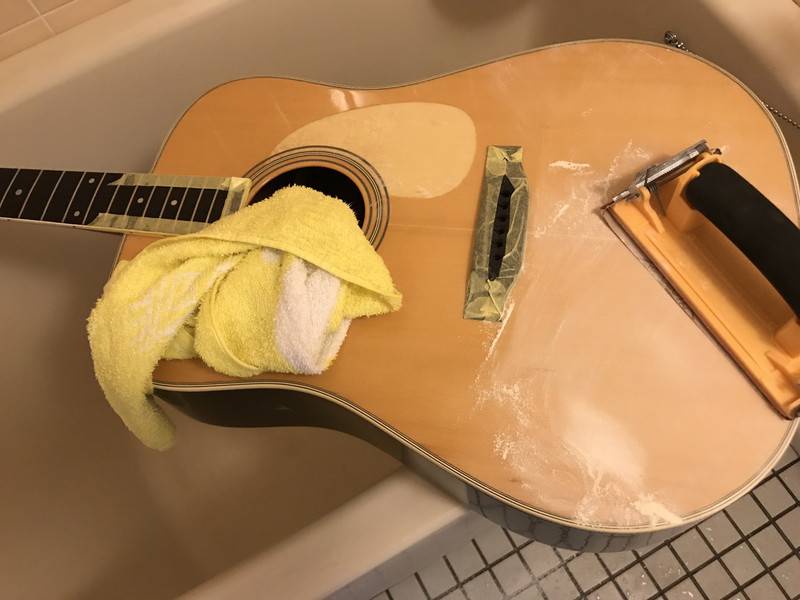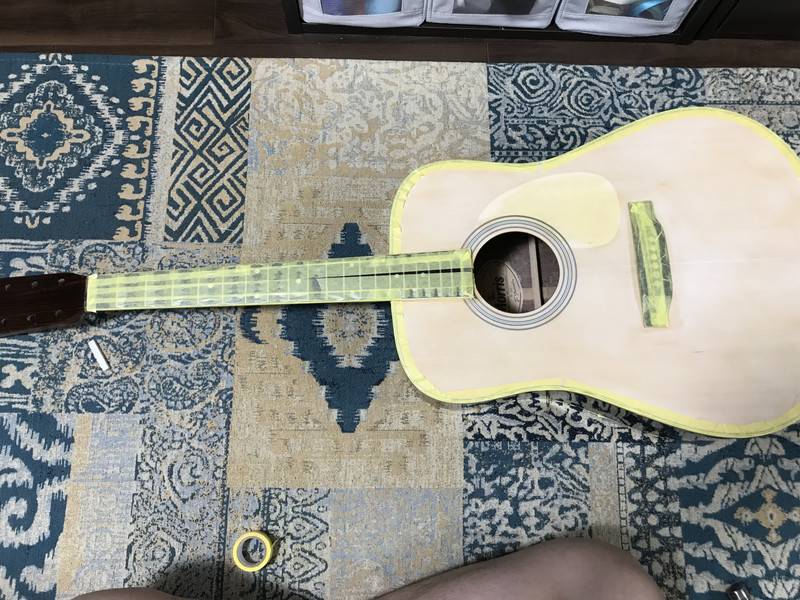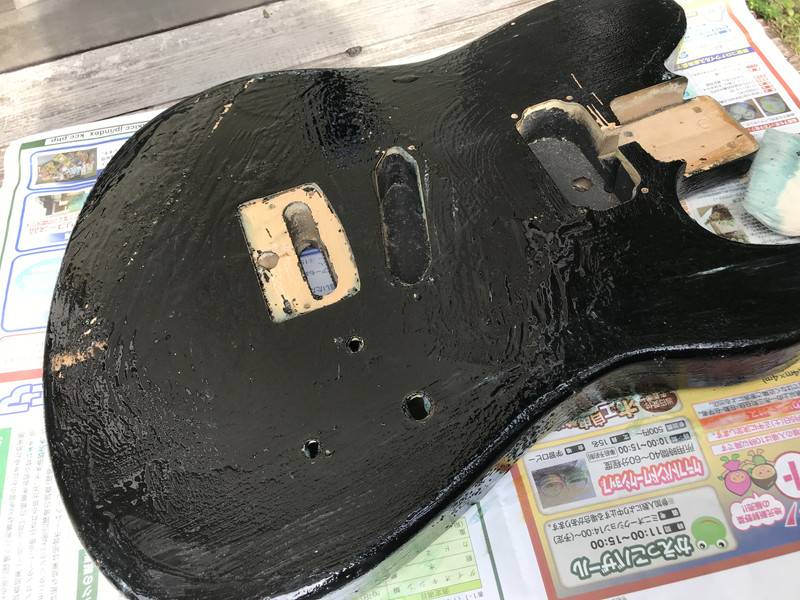Hello!
My name is Takuto Fujioka, guitarist in an acoustic unit called BABY BABY.
I originally enjoyed the process of making, disassembling, and remodeling things, and that's why I started doing guitar DIY. At first, I used to be afraid of just replacing pickups, but familiarity defeats the horrifying, and now I've come to the point of practicing fret replacement. It’s like a bottomless lake. Among the things I’ve done, refinishing a guitar seems to be quite a hurdle. However, there are various types of finishing methods in modern times, so if you choose a method with a difficulty level that you can do yourself and remove the finish, this is the one for you.(Quality aside…) However, in order to refinish, you must first remove the old finish. And that is hard….
So, this time, I would like to talk about the advantages and disadvantages, albeit subjectively, while looking back at the finish removing methods I have used so far.
Let’s go!
① Sandpaper
I think this is the most common and orthodox method of removing the finish.
Merits
If you can remove the base completely and prepare the wood for the new finish, you will be ready for refinishing and there will be less damage to the body. Also, since the guitar has many curved surfaces, it is easy to process the sides.
Demerits
It takes a lot of time to do it manually. In my experience, it took 2 hours just for the front of the body. The amount of dust that accumulates is tremendous. If you do this indoors, the room will be covered with dust and a mask is essential. If possible, it would be preferable to do it outdoors, but be careful when doing it indoors. I worked in a bathroom with a ventilation fan. Sanding also consumes a fair amount of sandpaper, so it takes a lot of patience.


② Iron
This is another common method, as common as sandpaper, and it is done by softening the finish with an iron or a dryer and scrapping it off with a scraper. I think that it is a common method because there are many people who are quite challenged when I searched "Guitar finish removal", and so on.
Merits
Unlike sandpaper, the room does not get dusty, so it is relatively easy to do with an iron and scraper. In addition, the finish can be removed while leaving the underlying sealer, so if scratches are repaired, it can be refinished as is.
Demerits
I myself have tried this method several times but never succeeded. (Therefore, there is no photo. I'm sorry.) Perhaps if the finish is thick and depending on the age, manufacturer, and type of finish, the heat may insufficient. Also, since a scraper with a sharp tip is used, the body often gets scratched even if the work is done carefully. If that happens, you will need to use a surfacer or sandpaper to hide the scratches, which will take time and effort.
③ Finish remover
This can be called a last resort. It is a method that relies on the power of chemicals.
Merits
Hopefully you can save a lot of time. Simply apply it to the finish and leave it for a few hours to melt the finish. If you use a finish remover for musical instruments, you can work with less damage to the wood.
Demerits
It has a strong odor and cannot be used indoors. Also, if it touches the skin, you will experience severe pain. Gloves are essential. It is a dangerous substance, so care must be taken when handling it. Also, depending on the type of finish, it may not come off clean. It's a convenient product that saves time, but it doesn't seem to be all-purpose.


Conclusion: Personally, I think sandpaper is the best
It takes time, but I think this method is the lowest risk and the lowest cost to remove the finish. Introducing tools such as electric sanders will save you a lot of time. However, the noise during work is quite loud, and even if it is used indoors, the dust will be great, so that area becomes a problem. It's a time-consuming guitar DIY job, but a guitar that has been assembled over time has even more value and you’ll feel more attached. Also, DIY is fraught with failure. However, I am grateful to have learned the structure of the guitar in more detail and to know that the guitar that I play as a matter of course was made with such a lot of effort. It's a good experience to take on the challenge of refinishing an instrument without fear, so why not step into the DIY bottomless lake?
See you again!


























